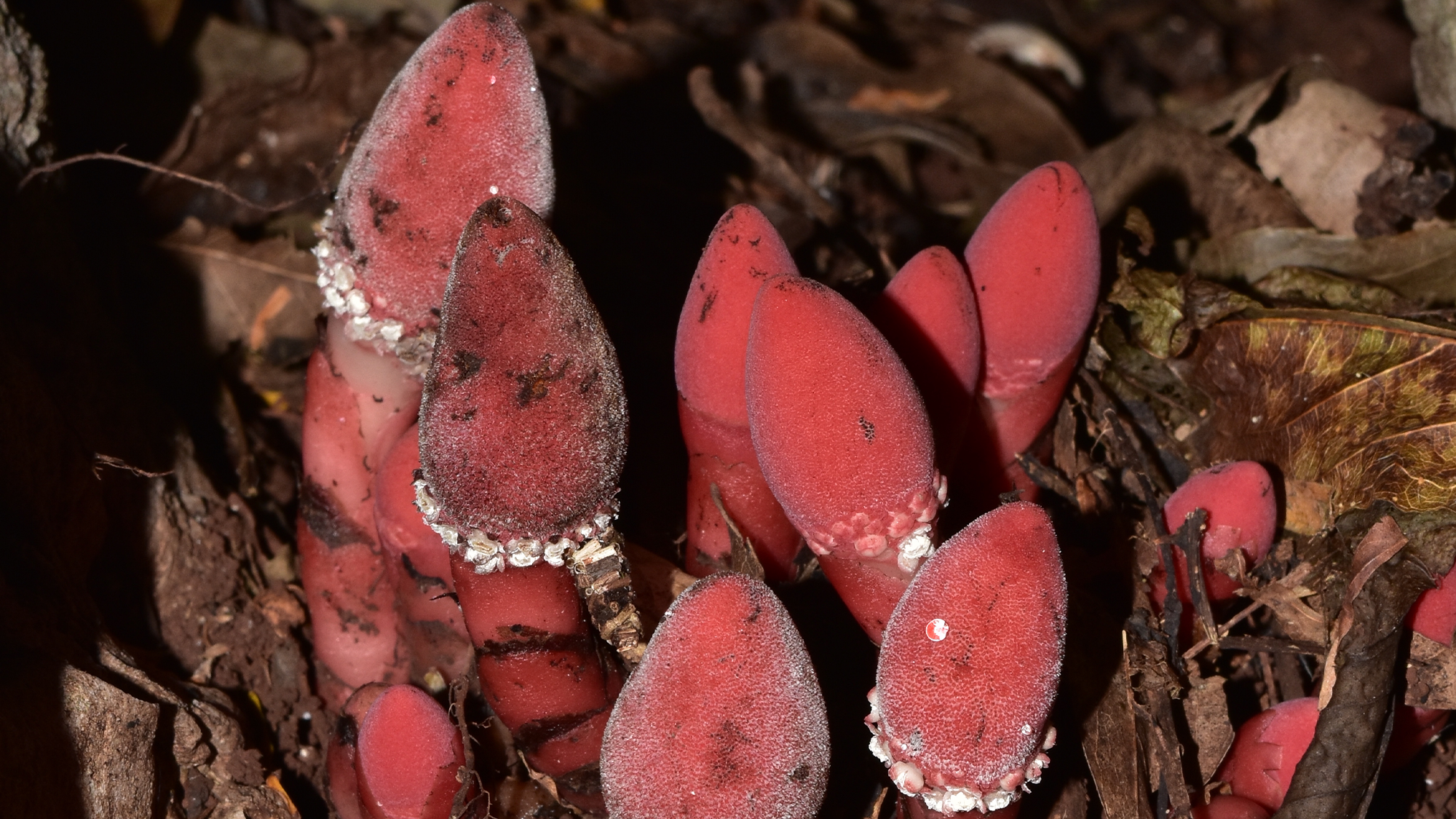

Parasitic plants make up about 1 percent of flowering species within the plant kingdom and their quirks and tricks continue to come with surprises. Some parasitic plants are now potentially evolving to be so dependent on their host plants, that they are losing sizable amounts of genomes related to basic biological processes like photosynthesis. The findings are described in a study published September 21 in the journal Nature Plants.
[Related: How a peculiar parasitic plant relies on a rare Japanese rabbit.]
Plants in the Balanophoraceae family that are found in tropical and temperate regions in Asia and tropical Africa generally resemble fungi growing around the roots of trees in the forest, but there is a lot more than meets the eye. The structures that look like mushrooms are instead inflorescences, or a cluster of flowers intricately arranged on a stem.
However, unlike other parasitic plants that extend a skinny projection called a haustorium into a host’s tissue to steal its nutrients, plants in the Balanophora genus actually induce their host plant’s vascular system to grow into a tuber to store nutrients. This forms a unique underground organ made from tissue of both the host plant that Balanophora then uses to eat..
To learn more about how these subtropical extreme parasitic plants evolved into this unique form, a team from the Beijing Genomics Institute (BGI) and the University of British Columbia compared Balanophora’s genomes with another parasitic plant genus called Sapria that has a very different vegetative body. Sapria are members of the family Rafflesiaceae, including some very smelly corpse flowers, and can generally be found in tropical forests of Asia.
The study found that Sapria has lost 38 percent of its genomes and Balanophora has lost 28 percent of their genomes over time, while evolving their parasitic behaviors, which the authors say is a record genetic shrinking for flowering plants.

“The extent of similar, but independent gene losses observed in Balanophora and Sapria is striking,” study co-author and BGI Research plant geneticist Xiaoli Chen said in a statement. “It points to a very strong convergence in the genetic evolution of holoparasitic lineages, despite their outwardly distinct life histories and appearances, and despite their having evolved from different groups of photosynthetic plants.”
They found that both Balanophora and Sapria have even lost almost all of the genes associated with photosynthesis and other key biological processes, including nitrogen absorption, root development, and the regulation of flower development.
“The majority of the lost genes in Balanophora are probably related to functions essential in green plants, which have become functionally unnecessary in the parasites,” study co-author and University of British Columbia botanist Sean Graham said in a statement.
[Related: We’re finally figuring out how plants pass on genetic memories.]
Since these parasitic plants don’t necessarily need to rely on sunlight and water to make food through photosynthesis and instead use the resources of their host plants, they appear to be losing those genes.
Notably, the genes related to the synthesis of a major hormone responsible for plant stress responses and signaling called abscisic acid (ABA) have also been lost in Balanophora and Sapria. Even with the loss, the team still recorded a build up of the ABA hormone in Balanophora’s flowering stems and saw that genes involved in the response to ABA signaling are still retained in the parasites. According to the team, this gene loss could be beneficial to the plant.
“The loss of their entire ABA biosynthesis pathway may be a good example. It may help them to maintain physiological synchronization with the host plants,” said Graham. “This needs to be tested in the future.”
The team says that this study deepens the major genomic alterations occurring within parasitic plants and is important in the context of a project working to sequence the genomes of 10,000 plant species called 10KP.
